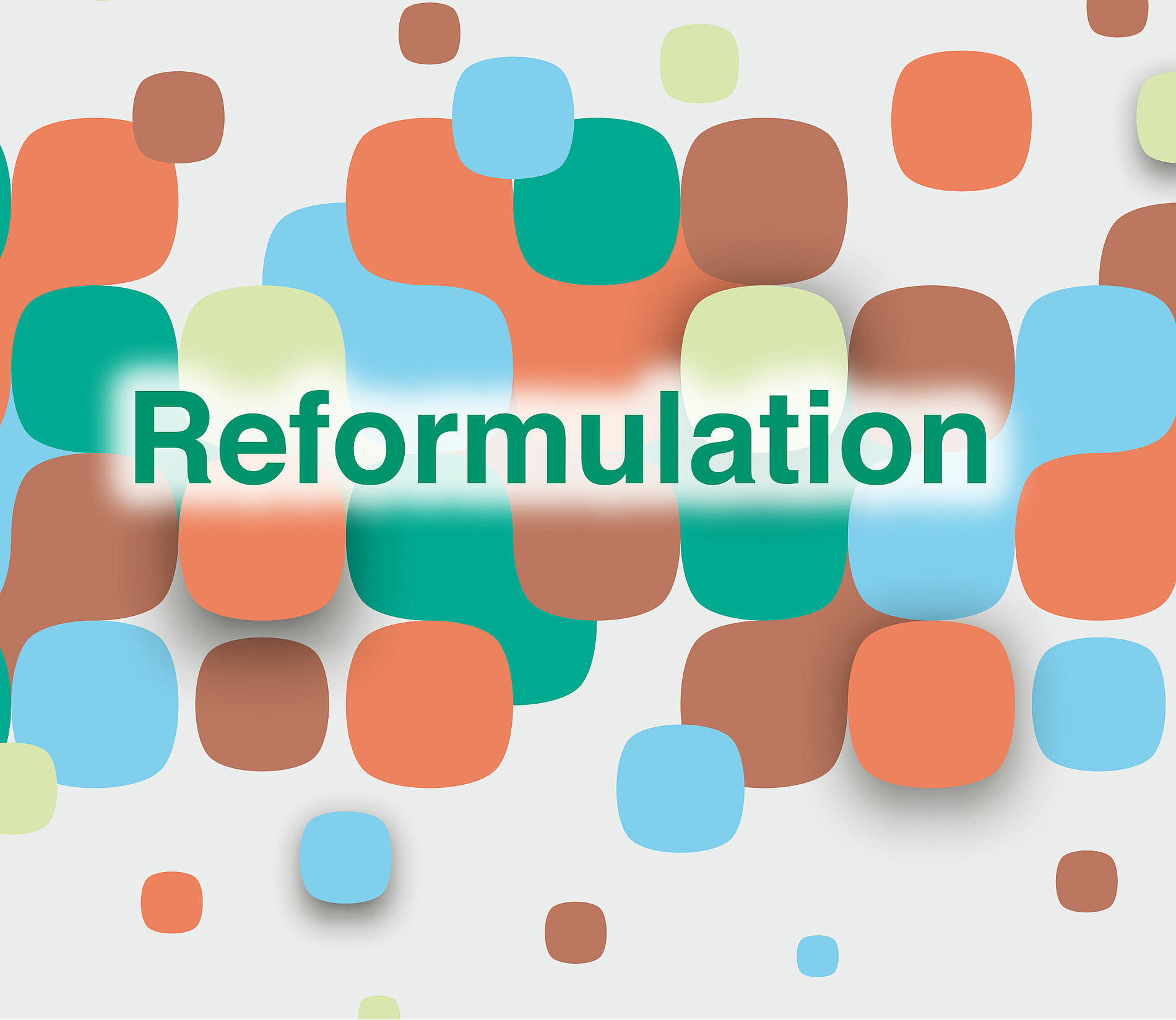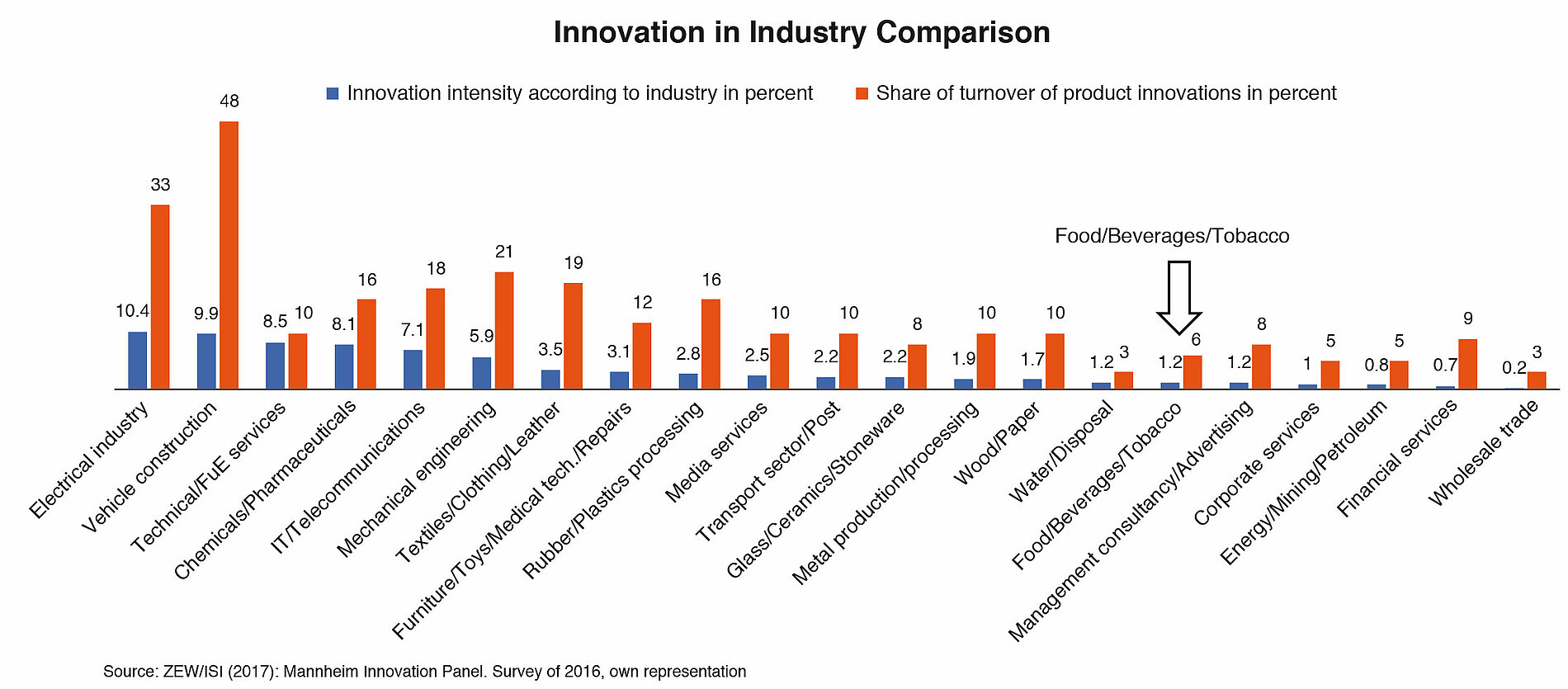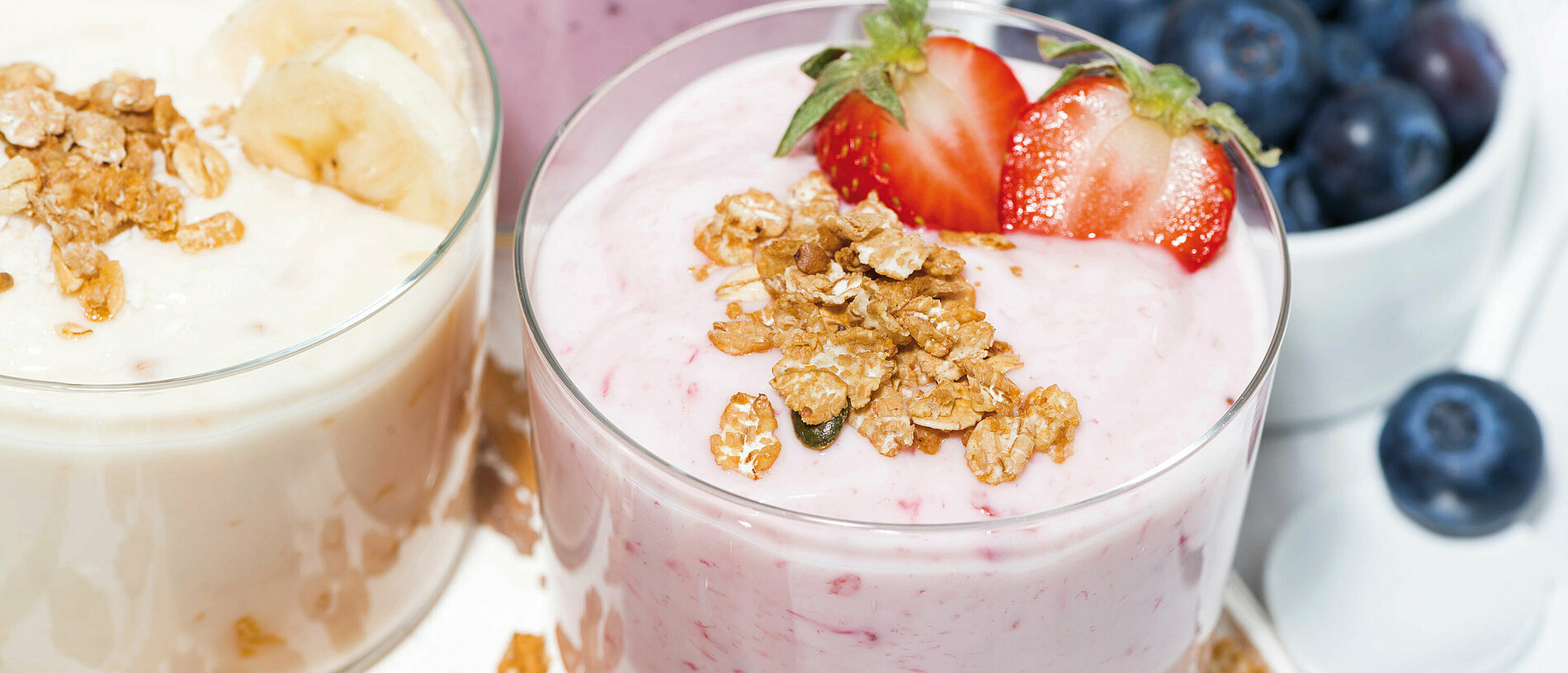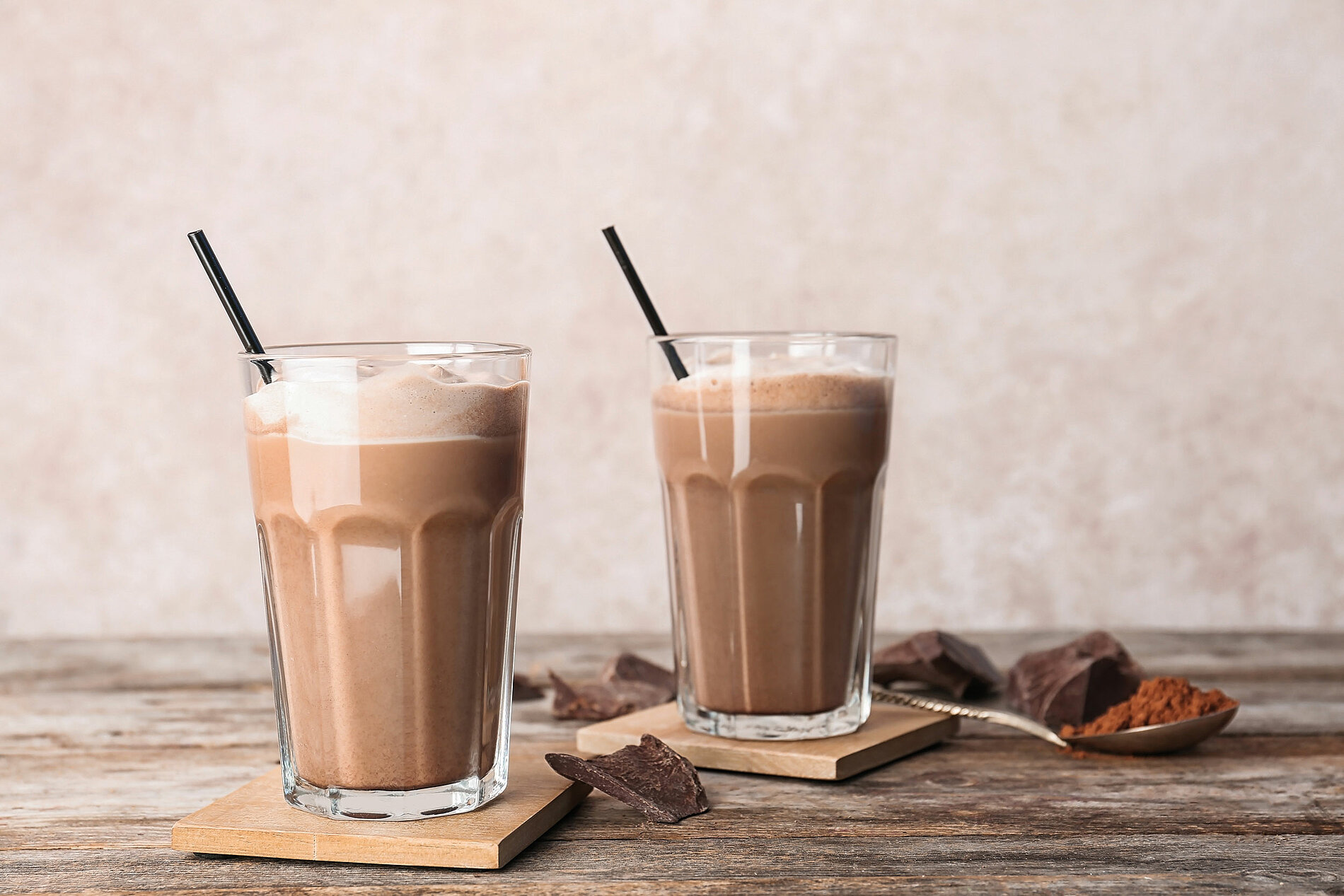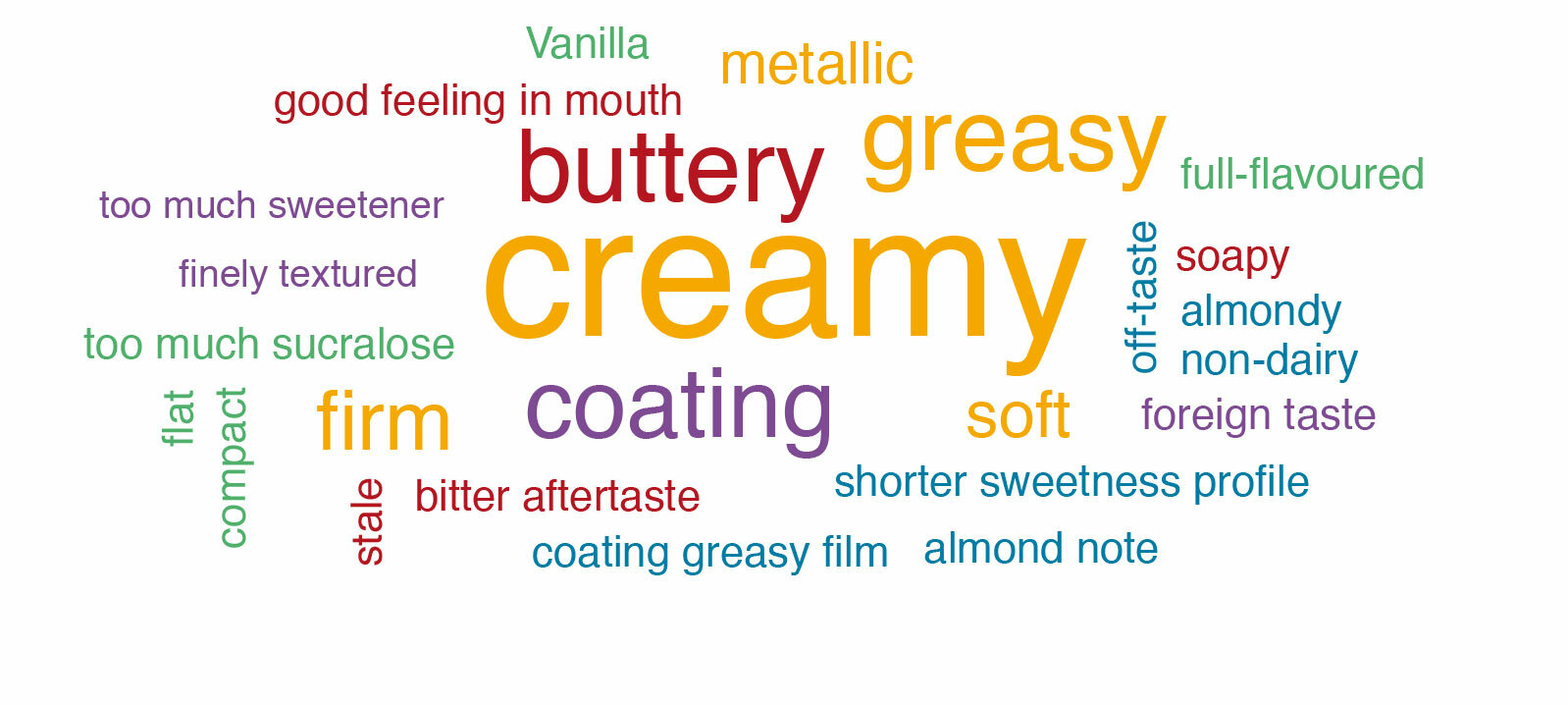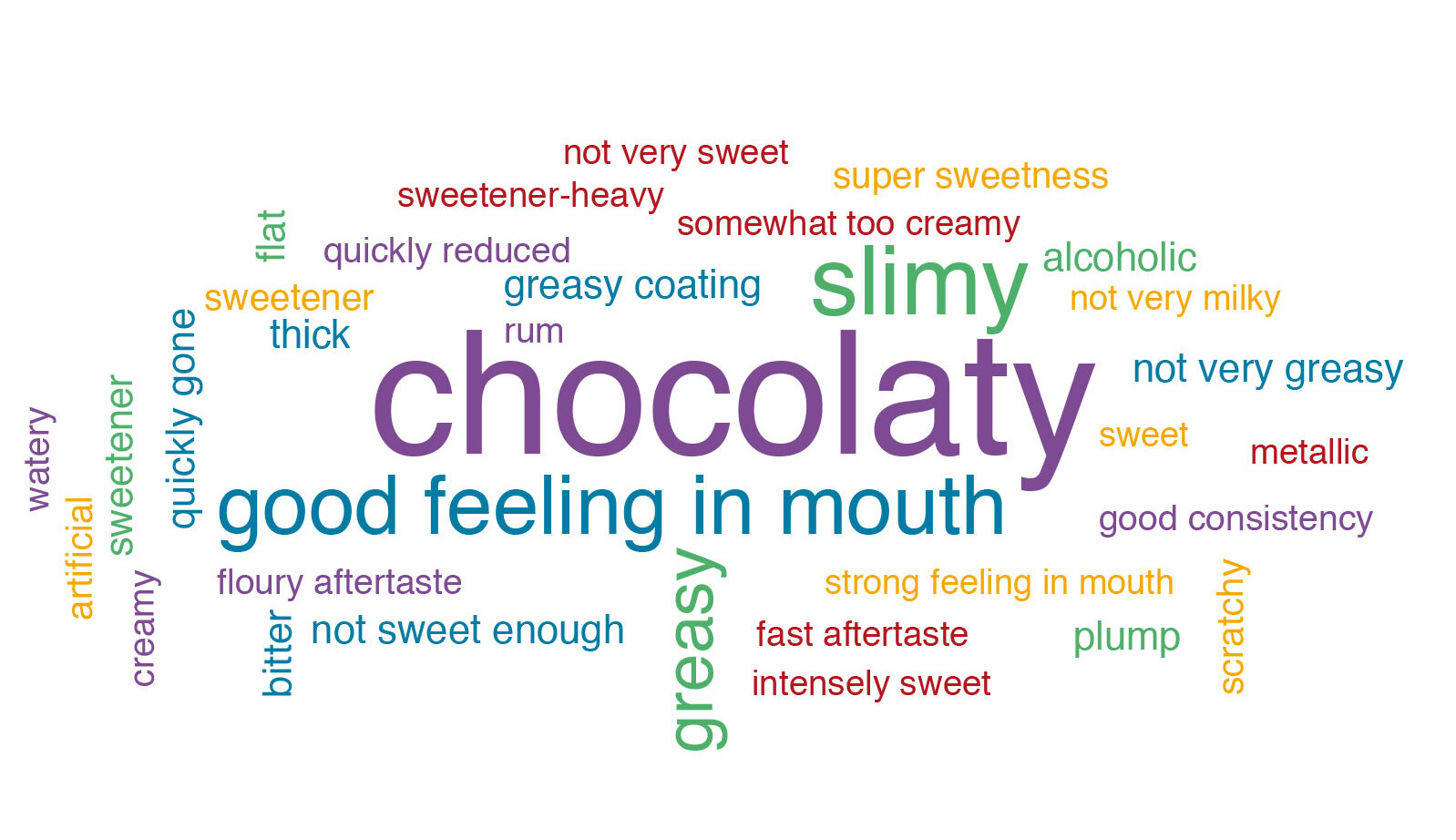Reduction Strategies for Fat, Sugar and Salt (Part 4) – Focus on milk, dairy products and cheese
DLG-Expert Report 13/2018
Authors:
„ThinkTank Reduction2020“
Dr. Mehmet Cicek, Fovation – Food & Innovation Consultancy
Dr. Malte Rubach, M.R.EXPERT
Prof. Dr. Johannes Erdmann, Weihenstephan-Triesdorf University of Applied Sciences
(Hochschule Weihenstephan-Triesdorf)
Prof. Dr. Helge Fritsch, Baden-Wuerttemberg Cooperative State University
(Duale Hochschule Baden-Württemberg) in Heilbronn, Germany
Prof. Dr. Stefan Töpfl, University of Osnabrueck
(Hochschule Osnabrück), Germany
Johanna Bayer, blog “Quark und so”
(Curds and such)
Guest authors:
Hans-Jürgen Seitz, J. Rettenmaier & Söhne GmbH + Co KG
Monika Wiesbeck, J. Rettenmaier & Söhne GmbH + Co KG
Anja Schöner, University of Hohenheim (Universität Hohenheim), Germany
Contact:
Simone Schiller,
Managing Director DLG Competence Center Food
S.Schiller@DLG.org
Update on milk technology: What works and what doesn’t
(Prof. Dr. Stefan Töpfl, Osnabrück University of Applied Sciences)
Salt, sugar and fat play an essential role in the structural design, shelf life and sensory properties of many foods. However, excessive consumption of these components leads to health problems and has therefore become the focus of consumers, legislators and the food industry.
A reduction of their content is not easy to implement due to the diverse functions of the substances, and the available substitutes and replacements are also viewed critically in some cases. Targeted process engineering solutions are a possible alternative.
With a per capita consumption of about 52 kg of drinking milk, 30 kg of mixed milk drinks and 24 kg of cheese, dairy products are an essential source of nutrients. Milk and dairy products are particularly suitable for reduction strategies in the area of fat and sugar due to their complex composition and product structure. A reduction in salt is particularly prominent in certain product categories such as processed cheese preparations. Alternative melting salts, such as calcium or potassium salts, can be used here. In traditional cheeses, salt influences the whey permeability of the curd and the shelf life in addition to the sensory properties. A combined approach using a coagulation enzyme, as well as starter and ripening cultures with rapid pH reduction and enhanced aroma formation, makes it possible to reduce the salt content in semi-hard cheeses.
Sugar fulfils a variety of different functions in dairy products. In addition to its primary function as a sweetener, it contributes, among other things, to structure formation and viscosity increase or to lowering the freezing point and improving the gas retention capacity. Measures for sugar reduction refer – in addition to a “silent” reduction already carried out for many years by successively reducing the addition of granulated sugar – to partial enzymatic digestion of the lactose or the use of sweeteners to maintain the sweet taste. Thickeners or fibres are then often used to achieve the desired product structure.
A reduction in fat content can also be achieved through suitable structural design. By using ultra-high pressure homogenisation or double emulsions, a reduction of the fat content can be achieved while maintaining the sensory properties. In addition, a matrix-stabilising effect can be achieved by adding fibres (dietary fibres) or thickening agents, which enables a reduction of the fat as well as the sugar content. Furthermore, the use of whey proteins micro-particulated via a combined thermal and mechanical process is suitable as a fat substitute. Planetary roller extrusion can
be used in the production of ice cream. Due to the very high heat transfer, the process enables continuous production
and hardening of ice cream. As products with very high viscosity can be processed, it is possible to reduce the fat
content.
The fear of milk: How much evidence is there?
(Prof. Johannes Erdmann, Weihenstephan-Triesdorf University of Applied Sciences)
Milk, like hardly any other food in our culture, is associated with a strengthening, health-promoting effect. We were all brought up with it and for decades we were taught that milk is good and important for our bones and how different milk is compared to other drinks. This is why reports in the media and Internet platforms about newly discovered harmful effects that are said to be caused by the consumption of milk frighten consumers and scientists alike. Do we need to change our views on milk? Are the essential ingredients in milk that were once so important now really harmful?
In order to investigate the relationship between the consumption of milk and dairy products and the effects on human health, a variety of experiments have been conducted with the ingredients of milk and their effect on human physiology and patho-physiology has been tested. However, these highly controlled experiments do not correspond to the reality of life, because no one will subsist exclusively on milk outside the infant period. It is clear that milk consumption can lead to measurable changes, e.g. in the fatty acid profile and individual metabolic parameters in humans. The crucial question here is, does this also have an impact on the development and course of diseases?
The reality of life and nutritional physiology are much more complex. Therefore, it is not surprising that the hypotheses obtained in the experiment cannot always be confirmed when looking at a population through prospective cohort studies. However, it is striking that at present, especially in the lay media and on the Internet, there are downright warnings against milk consumption. “Milk is unhealthy because it goes through many technical processes, it is an industrial food, milk is homogenised, pasteurised, heat treated, preserved”. Milk is reported to be associated with the development of asthma, the frequency of respiratory infections and middle ear infections or acne in children. In adulthood, a higher incidence of obesity, type 2 diabetes, cardiovascular diseases, certain forms of cancer and, surprisingly, a higher rate of osteoporosis-related bone fractures can be attributed to milk consumption. Where do these statements come from and are they scientifically justified? First, for most of these claims, there are indeed associations in prospective cohort studies to which dairy opponents can refer, and they are not a priori nonsensical.
Nevertheless, it is noticeable that the comments critical of milk are mostly an isolation of individual studies. Such isolation is not scientific. In most cases, a large number of studies with comparable questions could not confirm this. Summaries of studies with similar designs, so-called meta-analyses, predominantly conclude that milk has no adverse health effects. However, meta-analyses remain predominantly unmentioned in the comments of vegans who speak out against the consumption of milk. In the attack on milk as a foodstuff, study-critical objectivity is lacking here; it takes a back seat to its own preconceived and ideologically shaped message. “We are the only living creature that consumes milk after infancy”, can only be said by people who have never observed a cat licking out a milk bowl. Indeed: Cats can’t milk cows, but they would if they could.
Beyond the selective perception of studies, their results are not methodologically reflected and discussed in the context of differing scientific findings. Often, conclusions are drawn from experiments in cell culture or in animal studies and data available in humans are not taken into account. An example of this is the debate about the different casein composition of A1 and A2 milk. The mere fact that the casein of A1 milk results in the possibility of forming a casomorphin (Note: casomorphins are peptides that are produced during the digestion of milk proteins and certain forms of this group of substances can have analgesic effects, so that an addictive effect is being propagated in the vegan scene), calls crowds of warning people to take action. Hardly any of the admonishers have really dealt with the problem and there are no reliable data from human studies either. However, one has the impression that this serves to promote subjective argumentation, because everyone can speculate wildly. The fact is that so far no different effect of A1 or A2 milk on the human organism has been scientifically proven. The majority of the studies were commissioned by the A2 Milk Company and do not meet the objective criteria for meaningful evidence.
If we look at the data on the effects of milk consumption on bone metabolism, the picture is quite clear. Increased milk consumption is associated with higher bone density and lower rates of vertebral fractures in the vast majority of cohort studies, while femoral neck fracture rates do not appear to be equally dependent on calcium intake. Or rather calcium intake is only one of many factors, such as fall propensity or muscle strength, that determine fracture risk. A whole series of studies show that milk consumption could have a favourable effect on parameters of the metabolic syndrome, the fatty acid profile, blood pressure and the risk of developing type 2 diabetes.
As for any isolated food, it is difficult to really prove a per se health-promoting effect for milk and its ingredients or, conversely, to prove direct harmfulness – if one disregards toxicological or infectious problems. The lifestyles of the people participating in such epidemiological studies, who often have to be examined over many years, are far too different for this. The instruments that scientists use to determine the amount of each consumption allow, at best, an estimate. So it is not surprising that every now and then a study with contradictory results is published and, because of this contradiction, receives wider public attention than what is already known. In fair scientific discussion, however, these must be appreciated just as much as the new and carefully analysed, independent of commercial interests.
Milk contains a large amount of calcium and many other potentially useful substances and of course, and this is undisputed, calories. If you drink too much of it, you will get fat, just like with other foods. But this is actually nothing new.
The enemies of milk: Arguments and strategies
(Johanna Bayer, blog “Quark und so” (Curds and such))
The myth of milk has been tarnished; the cult food suddenly has many enemies: At the beginning of 2018, milk is more criticised than meat. Unlike meat, about which there are mainly ethical concerns in the general debate and among consumers under the headings of animal husbandry and environmental protection, milk is about the substance itself: It is said to be unhealthy now, and unnatural. Vegans in particular, who reject all animal foods, have milk on the brain: On 6/3/2018, the hashtag #milchistgift (milk is poison), launched by a vegan Youtuber, was trending on Twitter. Other diets are also critical of milk, such as the Paleo method and various natural food teachings.
All these trends are young. Until a few years ago, even vegetarians were still considered outsiders, even more so vegans. Neither of them has a great occidental history; vegans have only been around since the middle of the 20th century and vegetarians, contrary to their own legend, have only been on the fringes of European food culture from the very beginning. It was not until the 18th century that philosophers formulated vegetarian principles at all – but without any medical or historical basis.
Today it’s different. The renunciation of meat and animal products appears in a new light, and the actors like to use scientific studies as proof for their health theses. When vegan Simon Unge put the hashtag #milchistgift (milk is poison) on Twitter on 6/3/2018, he proclaimed in his video on dairy products: “We are systematically being made sick!”. He referred to science to justify this: “Look at the studies!”. However, only experts can recognise that such opponents of milk selectively quote and interpret research results. Among the general public, the dubious messages seep through, and here further reservations persist. There is a widespread assumption that milk “congests” and that it causes ear infections. What is striking in the debate is that the milk critics are raising questions that have long since been scientifically decided: Is it even natural for humans to drink milk? Is it normal to be able to digest milk as an adult? Is milk really nutritious, does it contain good substances and minerals or even questionable, harmful substances?
Protagonists include the Vegetarierbund Deutschland (formerly VEBU, now called ProVeg), celebrities such as Attila Hildmann (German celebrity chef, cookbook author and vegan), the animal protection organisation PETA, but also the classic media, bloggers and activists on the Internet. In the debate, the vegans show themselves to be well organised and professional: They offer information, discussion guides or material for student presentations. However, health arguments serve them more as a vehicle for their actual messages: criticism of consumption and animal welfare.
The classical media like to take up such nutrition debates, as after all, the topic of food is always attractive. But many editorial offices uncritically accept material supplied by associations, NGOs or activists – the fact that this is not independent information is often lost in the daily routine. The consequences: “Nutrition populism” and often also a questionable understanding of science.
Especially on the Internet, esoteric and post-factual argumentation patterns up to tangible conspiracy theories are emerging in the dispute over milk: the fundamental doubting of scientific knowledge possibilities, deep mistrust of institutions and science, the claim that the true facts are being denied for political or economic reasons and others.
Although the consumption figures for milk and dairy products show that consumers are not too confused, and there is also some opposition to campaigns like #milchistgift, the question still arises: Why do seemingly abstruse ideas fall on fertile ground with people? Why do hundreds of thousands believe unsubstantiated or even irrational claims? There is no real explanation for this international phenomenon. But there are some attempts: Social psychologists and philosophers focus on how beliefs are formed and why people tend to hold on to their opinions even when facts contradict them. One example is the opponents of vaccination – often parents or grandparents of young children. Researchers have analysed their motivations: Obviously, it is particularly important to these medical sceptics that they have the freedom to decide for themselves about the treatment of their children. Their commitment against vaccination is ultimately out of care and responsibility. The motif of purity also plays a characteristic role: Opponents of vaccination regard the injections as a poisonous cocktail.
According to psychologists, such overriding moral intuitions – freedom, fairness, purity, loyalty and others – form the basis for beliefs in everyday life. Once they have grasped their convictions, people do not let them go and seek out the appropriate information to go with them – facts that contradict their preconceived world view are ignored. Against this backdrop, the researchers advocate different strategies in awareness campaigns: They should not aim past people’s moral intuitions and convictions; emotions must be taken into account.
Perhaps some of this can also shed light on food debates. For example, “purity” of food is a very powerful motive in many cultures. For many centuries, religious food regulations have included the idea of purity, for example in Hinduism and among Jews and Muslims. Today, the success of trends like “clean eating” or the “free-from” products show that the idea of “pure” food is very significant for people.
Where does milk stand in this context? Don’t fool yourself: We have always had reservations about milk, and especially about drinking fresh milk. Not everyone likes it, not everyone can tolerate it. This is completely normal, long recognised and culturally specific. After all, fresh milk as a mass foodstuff is also a fairly recent phenomenon, as drinking milk has only been available in large quantities since the end of the 19th century thanks to pasteurisation and refrigeration technology. The aggressive marketing of fresh milk as a healthy food and ideal nutrition for children originates from the early 20th century. Milk therefore became the model image of a pure, white, natural food, associated with special cleanliness in processing, freshly washed dairymaids, happy cows and healthy, rosy-cheeked children. The motif of purity is clearly recognisable here – now milk enemies are teasing out the opposite: milk is supposed to be impure, full of hormones, full of carcinogenic growth factors, dangerous proteins, residues of antibiotics or medicines and more. Whether these reservations are justified and how to deal with them should be discussed rationally.
With all senses: Sensory & pleasure value decoding for dairy products
(Prof. Helge Fritsch, Baden-Wuerttemberg Cooperative State University (Duale Hochschule Baden-Württemberg) in Heilbronn, Germany)
For the development of foods, including dairy products, the early use of sensory and consumer testing offers decisive advantages: It makes it possible to develop products efficiently and in a target-oriented manner that fully meet consumer demands. Especially in reduction programmes such as sugar, salt and fat reduction, it is advisable to systematically decode the enjoyment value of a product through consumer feedback and complementary descriptive sensory analysis and to holistically work out the key sensory attributes responsible for consumer preference. This systematically reveals which sensory stimuli beyond taste attributes are decisive for the consumer.
Also with regard to the sugar reduction of dairy products (and fruit preparations used), this so-called multi-sensory approach allows the overall sensory stimulus to be made attractive to the final consumer in such a way that product preference is still maintained – even though the total amount of sugar used has been reduced.
As a result, the perceived overall sweetness of a product can be modulated both by the inclusion of sweet olfactory notes and by visual product design, and a lower sugar content can therefore be balanced in a multi-sensory way. For example, caramel-like, honey-like, vanilla-like and coconut-like notes in retronasal perception enhance the perceived sweetness. For sweetness modulation, these notes can be evoked in a purely natural way, for example through appropriate ingredient selection or also through process modification. Therefore, caramel-like notes, mainly caused by furaneol, can result from the introduction of strawberries or pineapple (and corresponding processing thereof), or also from sugar caramelisation. A honey-like odour, caused among other things by phenylacetaldehyde (a so-called stretching aldehyde known from the Maillard reaction), can be introduced in sweet modulation not only by honey, but also by the use of roasted grain. The examples mentioned make it clear that, in addition to the use of sensory methods, the systematic decoding of natural odourants in foods and food ingredients also facilitates the design of ideal sensory product profiles in reduction projects and makes them transparent.
In particular, this also provides the basis for so-called food pairing – food pairings interesting from a sensory standpoint and attractive for consumers, which also have a great potential for dairy products in that they simplify sugar or fat reduction. Examples are used to highlight how knowledge of common natural odours can be used to combine different food ingredients in dairy products and make the overall sensory stimulus of sugar and fat reduction “a sideshow” for the senses.
In summary, the described methodological approaches from sensory research, consumer research and flavour research can simultaneously take into account several central consumer trends in connection with food in product development and reformulation: For example, the enjoyment trend (in the sense of designing multi-sensory enjoyment), the health trend (in the sense of optimising nutritional profiles of food) and the credibility trend (in the sense of using only natural ingredients – clean food).
Design thinking approaches in product development
(Dr. Malte Rubach, M.R.EXPERT)
Everyone is talking about Design Thinking. To understand what this is all about, one should go back to the origins of this approach. Imagine a fashion studio where a new collection is being designed. The head designer has an interdisciplinary team of, for example, tailors and stylists and other skilled workers. In the documentary film “Dior und ich” (Dior and I), the process is illustrated like this: The creative director and his team have developed a bundle of ideas to position the Dior brand for the next prêt-à-porter season based on current trends, fashions and colours. But what will be launched for the mass market in the end? Models (prototypes) are made at an insane pace and demonstrated directly by models to a group of fashion experts in the studio on the same day. In the short run-throughs, it becomes clear what Design Thinking does in practice. Through direct feedback, entire approaches are discarded and others are changed in their details, whether it is moving a button, using a hem seam as a style element or completely changing the fabric. In a short time, ideas are turned into products (minimum viable products, MVP) that can then be presented to a larger audience – the prêt-à-porter shows in New York, Milan and Paris are prime examples. What is rewarded with applause by buyers and experts there cannot only gain a foothold in the luxury segment, but also serves as a template for the mass market.
Design thinking has long since made it out of the niche of classic design-driven industries and into technology-driven industries. The agency IDEO from California has been developing the approach for the respective industries since the 90s with its managing director Tim Brown. The University of Stanford has also developed and systematised the approach academically. Stanford graduates are well-known founders who have driven digital business models through design thinking in particular, from Google to Snapchat. The so-called user experience is in the foreground and therefore little has changed in the basic process steps of design thinking. These are: Understanding – Observing – Synthesising – Ideas – Prototyping – Testing.
Each step is provided with feedback loops so that the initial idea quickly approaches the real customer need. Roger L. Martin describes the meaning of this principle in his book “The Design of Business” as the correspondence of “Validity” and “Reliability”. The advantage of design thinking therefore lies in developing a user promise quickly and pragmatically close to the customer’s needs, which can also be fulfilled. It is therefore suitable as an innovation method for freelancers and small businesses all the way up to large companies. A current example of the development of a design-based business model is the Californian coffee company “Blue Bottle”, established by Google Ventures, which was bought by Nestlé in 2017 for an amount in the mid-triple-digit million dollar range. Above a certain company size, however, the use of the concept means a paradigm shift, as an awareness for explorative thinking has to be created, whereas in day-to-day business the focus is usually on increasing the productivity of the prevailing business model. Against the background that product developments with reduced salt, sugar or fat content are not always rewarded by customers if the reduction successes are actively communicated, design thinking approaches can be promising for positioning reduced products with proven user experience.
Start-ups: Reduction strategies, milk substitute and surrogate
(Dr. Malte Rubach, M.R.EXPERT)
With a production volume of over 30 million tonnes of raw milk, Germany is among the top 5 milk producers in the world. Milk has always been considered a staple food due to its multiple value-giving ingredients and is part of the dietary recommendations in more than 40 countries to meet nutritional and energy needs.
Investments in product innovations are traditionally comparatively low in the food sector. The ZEW Industry Report shows just 1.2 per cent of turnover on average for the food/beverages/tobacco sector (1st place: electrical industry with 10.4 percent). Product innovations account for about 6 percent of turnover in the industry (1st place: vehicle construction with 48 percent). The food industry is investing at 2.1 percent above the industry average. Genuine product novelties, with 40 percent of the turnover share due to product innovations, have a significantly higher share than in the beverage/tobacco industry with 12 percent, where copycat innovations clearly predominate.
Cost reductions through process innovations, on the other hand, play an important role throughout the industry. Product innovations are often brought to market with the following objectives. It can be observed that some of the products only contain declaratively less sugar. In the area of milk substitutes, on the other hand, off-flavours that frequently occur must be masked by the increased addition of sweeteners.
- Reduction strategies: In particular, new products try to reduce sugar in mixed milk drinks, yoghurt, milk preparation and ice cream, e.g. by using grape sweetener or birch blossom sugar. Examples: CowCow, Oppo, Fairlife.
- Milk substitute: Milk substitutes are promoted with the intention of being more beneficial for health and delivering added value in efforts to achieve climate change goals. Behind the scenes, an interest in animal welfare and animal rights often plays a significant role. Milk substitutes are based on various protein-producing plants, such as peas, lupine, coconut or nuts. Examples: kite hill, ripple, Miyokos, Wink, WayFare, Heidi Ho, Good Karma, willow cup, Califia, Malk.
- Surrogates: As in the meat industry, there are also efforts in the dairy industry to produce real milk without dairy farming. For this purpose, the relevant protein, fat and carbohydrate components are produced biotechnologically using genetically modified yeasts and then mixed in the natural mixing ratio together with micro-nutrients, vitamins and water to form a milk surrogate. Example: Perfect Day.
Market check – Sugar in yoghurt and curd products
(Anja Schöner, University of Hohenheim)
At the end of 2014, a Humboldt Reloaded project at the University of Hohenheim surveyed the sugar content of yoghurt on the German market. Data from 597 products were collected for this purpose.
The sugar content per 100 grams of yoghurt in the tested products ranged from 3.4 to 22.3 grams. The main share varied only slightly between 13 and 15 grams. The actual sweetness hardly differed, because with less added sugar, the sweetness was achieved with sweeteners. On average, a yoghurt contained 14.1 grams of sugar per 100 grams. An ordinary cup of yoghurt has a consumption size of 150 grams, which corresponds to 21.15 grams of sugar per cup. This means that the recommended 25 grams of sugar per day are almost reached with one cup of yoghurt.
In addition, a tasting experiment was conducted in which an averagely sweet yoghurt with 14 grams of sugar per 100 grams of product was compared with a less sweet yoghurt with 12 grams of sugar. The tasting experiment showed that over half of the participants would prefer a less sweet yoghurt. Some could not detect any difference in sweetness at all.
According to a market check by Stiftung Warentest (German consumer testing organisation) from 2017, the average sugar content of yoghurt and quark preparations was still around 14 grams of sugar per 100 grams.
The market analysis shows that there is still a potential for reducing sugar in dairy products, even though individual manufacturers have already reduced the amount of added sugar. As could be shown in the project, a gradual reduction of the sugar content is not directly associated with a loss of taste on the part of the customer. Nevertheless, adapting the recipe may mean using other ingredients in order to maintain the familiar product experience.
Use of dietary fibre and “functional celluloses” in dairy products
(Hans-Jürgen Seitz & Monika Wiesbeck, J. Rettenmaier & Söhne GmbH + Co KG)
Dietary fibre can make a valuable contribution to a healthy and energy-reduced diet. Traditional applications include processed cheese preparations, grated cheese and bake-stable cheese preparations. During the Reduction2020 workshop, recent developments in the field of dairy beverage stabilisation and ice cream were presented. The participants were asked to taste the products in turn and to give a rating in each case via an Internet-based survey tool through their direct associations with a maximum of three mentions. The collected attributes show where there could still be a need for optimisation in order to produce sugar-reduced ice cream or milk beverages with high customer acceptance. The formulations and participant associations are described below.
Ice cream
The production of the ice cream test sample was based on skimmed milk (72.9 %), maltodextrin/polydextrose/erythritol/sorbitol (16 %), vegetable fat (6 %) and skimmed milk powder (4 %). Mono and diacylglycerides of fatty acids (0.3 %), flavouring and colouring (0.21 %) and sucralose (0.01 %) were added in smaller amounts. VIVAPUR® MCG 811F and MC A4M were used as stabilising functional celluloses. Therefore, despite the reduced sugar and fat content, a full texture and good creaminess with fine ice crystals could be achieved. The ice cream contained 11.3 % carbohydrates, of which 5.8 % were sugar. The total energy content was calculated at 151 kcal/100 g.
The tasting revealed “creamy” as the most frequently mentioned attribute, followed by “greasy”, “coating”, “buttery” and “firm”. A “bitter after-taste” could be attributed to a possibly too high addition of sucralose, as well as some other negative associations. Desired associations could also be triggered, such as an “almond note” or “vanilla” impressions. A “good feeling in the mouth” or “finely textured” can also serve as positive feedback for further recipe adjustment. One participant feedback explicitly referred to the association to the memory of a product from childhood: “Brauner Riese” (a German sweet) and therefore played out on the senso-emotional level of association.
Chocolate drink
Skimmed milk powder (97.8 %), cocoa powder (1.5 %) and 0.37 % VIVAPUR® compound, consisting of MCC, CMC and carrageenan, were used to produce an energy-reduced chocolate drink. Also flavouring, mono and diglycerides of fatty acids (0.1 %), sucralose (0.01 %) and polysorbate 80 (0.002 %). The nutritional composition therefore showed a carbohydrate content of 4.9 %, of which 4.7 % was sugar. The total energy content was 53 kcal/100 g. The association context revealed “chocolaty” as the most frequently mentioned attribute, followed by “good feeling in the mouth” and “greasy”. The characteristic “slimy” can be brought into balance with the characteristic “good feeling in the mouth” in further optimisation steps. By using the VIVAPUR® compound, a creamy, full and powerful feeling in the mouth was to be achieved in this recipe. Feedback from the test panel confirmed the success of this approach. Other attributes also indicated in this test sample that the addition of sucralose could possibly be reduced or should be combined or exchanged with other sugar substitutes.
As a conclusion, the tasting of a prototypical sugar-reduced ice cream and cocoa drinks showed that reduction projects can be successfully and tastily realised using dietary fibres, cellulose-based stabilisers and hydrocolloids. Direct feedback methods can possibly shorten the development process here. The necessary adjustments or variations can therefore be implemented quickly and in a targeted manner.

